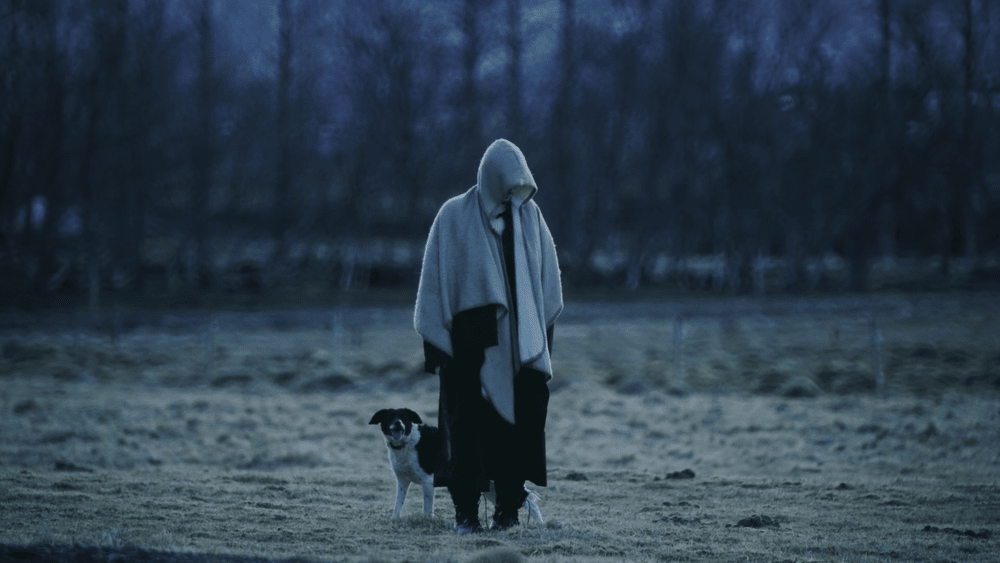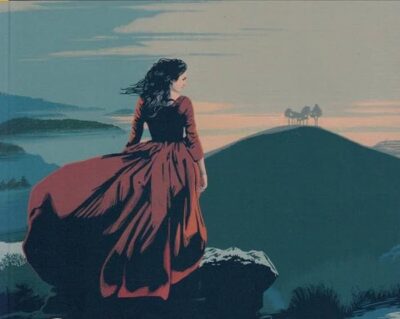TW//Suicide
Some of the most curious, moving and interesting art created was done posthumously. Viewing work created by someone no longer alive can help create a different level of appreciation. In this case, my favorite posthumous work of art was done by someone who was and is still alive. While the creator of I Didn’t Mean To Haunt You, the 2022 Alternative/Indie album, Quadeca (Ben Lasky) is very much still alive, he was not in the context of this album. An album which follows Quadeca into an entirely unique storyworld, he offers a painfully obvious commentary on the modern prevalence of suicide and provides an artistic take on suicide prevention.
A fictional version of Quadeca, one that throughout albums has slowly become famous, struggling over his success and loss of his first love to poor circumstances finds himself overwhelmed by the surprising loneliness of his moderate fame, taking his own life as a result. He is forced to roam his childhood house “somewhere in between” where he can watch his family members. They, though, are unaware of his presence or the mental state he exists in, a mental state that originated from the surprise of an everlasting purgatory. It is detailed in a late song on the album, in a “flashback”, why he took action against his own life. He thought of the afterlife as a “fantasyworld” in which he could be whatever he wanted, unlike the life that came with being a public figure and an artist. As metaphors for his take on the afterlife he sings “It’s your mom’s bakery in Maine, It’s that cabin in Sweden, It’s the going offline, It’s “Nеxt year, I’ll go vegan”…That’s a fantasy world, That’s the one that I’ve chosen.” He clearly anticipates that death will be comforting, whatever he makes of it, and how he can accomplish all he had failed prior.
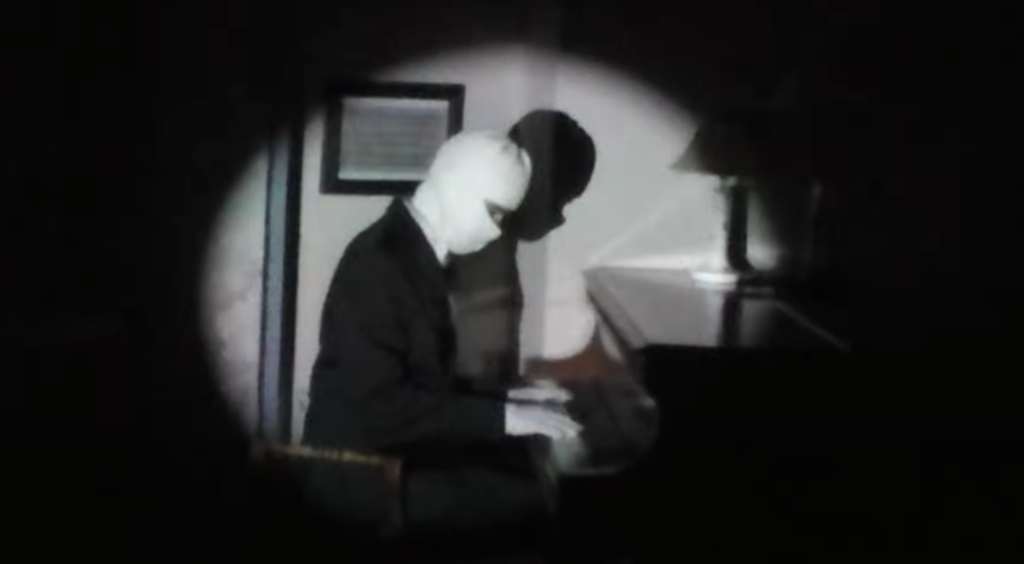
This album is filled with beautiful plot lines delivered in music made by someone clearly working in their comfort zone, but evolves into a crescendo during the song, House Settling. Here the same phrase used by his family to rationalize the noises and events he creates around the house is used, mockingly. Fed up with both the solitude and somberness of his own existence, as well as the time period his family is recovering in, one he deems too short, he decides he is going to kill his family as revenge and for some company in the afterlife. After much anger brewing and perceived mistreatment by those who he left to live without him, he turns on the stove one night while they sleep and fills his childhood home with carbon monoxide in a fit of rage. He perceives his family has wronged him by forgetting his memory, a narrative largely created by his own spectral delusion, when in reality he is is mad at the consequences of his own choices.
As an outro to the story, the song Fractions of Infinity is the main character begging god to forgive him for what he has done. “Those words don’t do you justice” is sang over and over again in what, to me, is Quadeca idolizing his late mother. She is mentioned throughout as the placement of his sadness and mistreatment post mortem, making me think she is either who he was closest with or is a metaphor for his family and love ones as a whole. In this case, he realized that he has made her immortal, she did not go to whatever plane he exists on as he expected and hoped, and whatever he can say or think about her does not do justice to what she was to him, or who she is now that he has immortalized her being with a wrongful death.
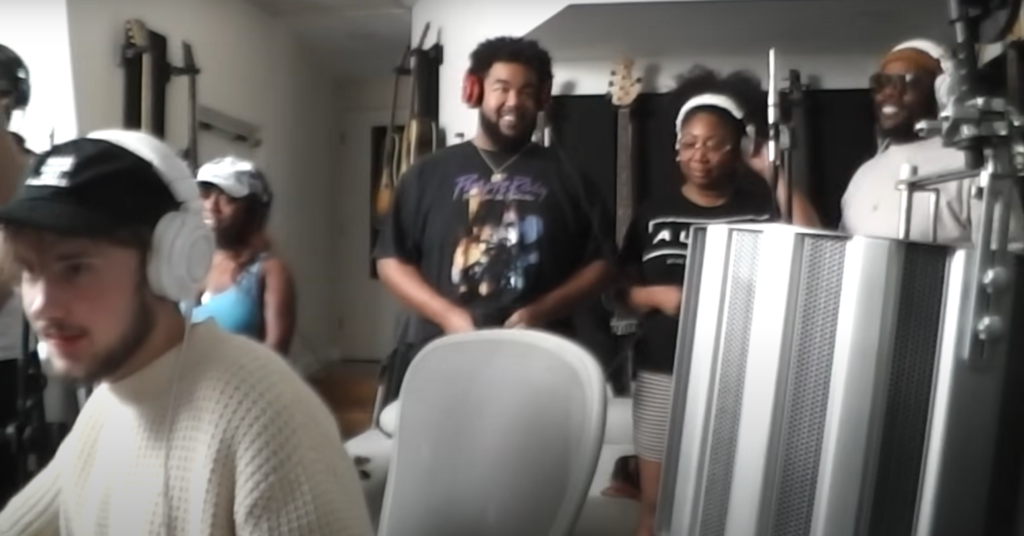
A song that does not fit into the plot very well, but does an exceptional job at creating the storyworld our main character lives in, is Picking Up Hands. Almost like he was trying to help me with this assignment, he describes the first time entering his childhood bedroom after committing suicide. He describes the green, faded color of the wall. He describes how the lamp is lighting up only a portion of the room and dimly allowing the rest to be seen, how he differently views the poster that has been hanging above his been his whole life, how the lamp cord was still lightly swinging. He describes how when he walks around this room as a new being he can feel his weight unlike prior and see his footsteps marking the dust scattered on the wood floor.
“It’s that room, it’s the wall, it’s the poster and all
And the lamp was still swingin’ its cord
It’s the shadowy weight and the footsteps ‘I take
Made a mark through the dust on the floor”
With his description you can actually picture a newly birthed ghost walking around their dimly lit bedroom, slowly, feeling their body, watching their feet shape the wood underneath.
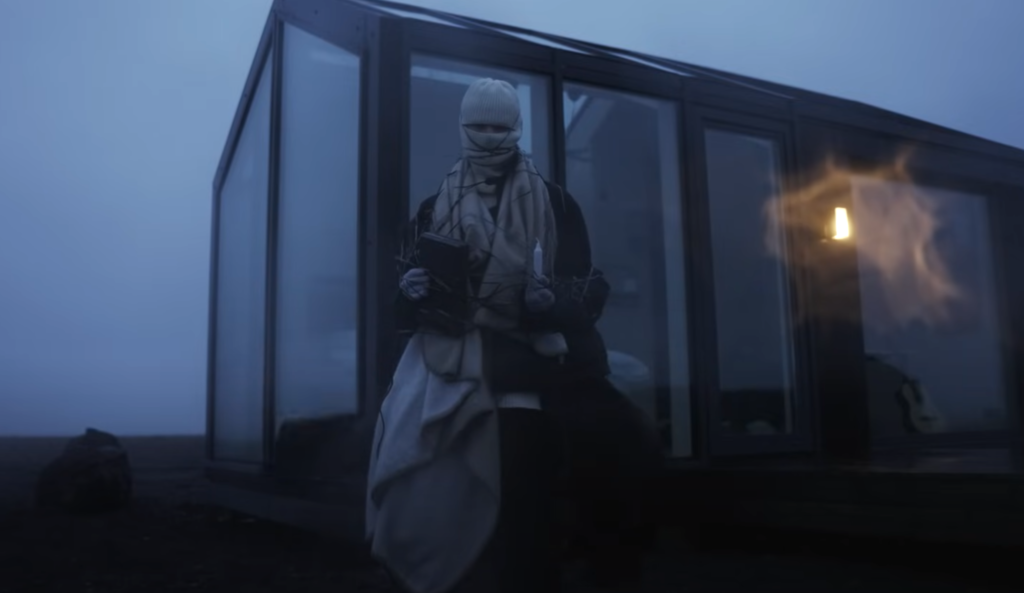
Now, we can take a look at the film that inspired Quadeca to write a dreary concept album of his own. A24’s A Ghost Story is like if Quadeca was not highlighting the importance in life, but using the afterlife as a platform to highlight the tragedy of grief and to highlight your importance by showing you how small you are. In what is genuinely the most uncomforting and deeply melancholic movie I have ever watched, you follow a recently deceased man who is haunting the home he and his wife just bought together. Single shots in this movie last up to four minutes and none seem to be any quicker than thirty seconds. Almost every single one, too, includes the man cloaked in the classic ghastly white sheet with black eyes standing motionless in the corner. His demeanor, despite the fact you get no body language or dialogue, is extremely saddening as he watches his wife without him in what is a, just like Quadeca’s album, literal take on the afterlife. The lack of dialogue, sound, color and just general normality is truly unsettling and is seen throughout. It is worth mentioning how David Lowery controls time. It feels slow when it needs to, the intimacy of a couple holding each other in bed would usually be quickly broken by some loud jumpscare. It is not, instead you brace the whole time, you simply succumb to the moment and actually begin to relax and enjoy the moment. The slowness causes you to become increasingly present and when the couple is sprung awake, it is by a small noise off in the distance, not a purposeful jumpscare. Later in the movie, you feel time get manipulated around the main character and change tempo completely. Time speeds up and 15 minutes, where in the beginning of the barely anything will have happened, an entire city rises and falls around the ghost.
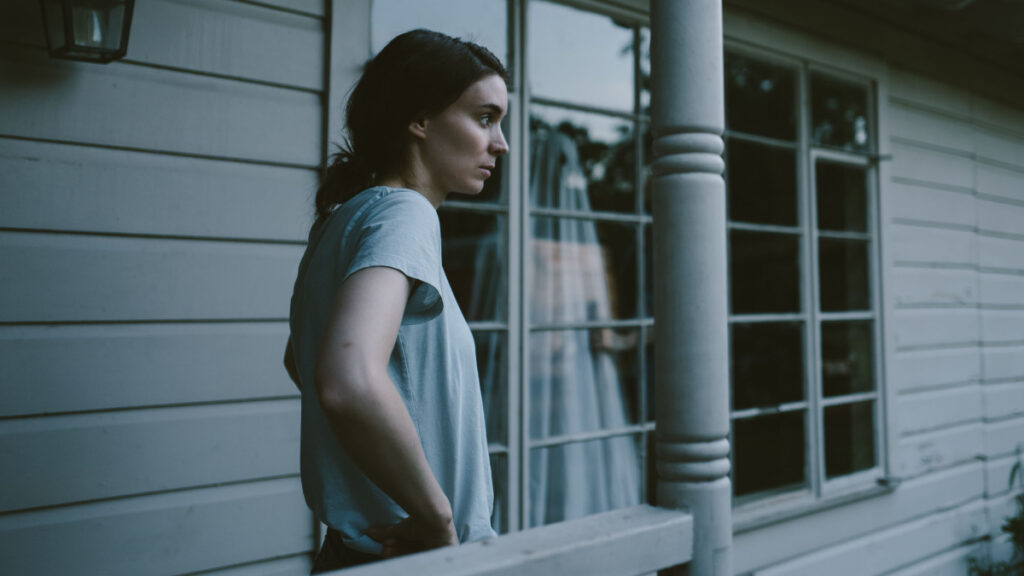
A Ghost Story also tells the story of grief for the women (in one four minute long shot she eats and entire pie in about a minute, then cries and throws it all up all while the camera and the ghost do not move). In the length of time you watch her, the silence permeates you like an awkward moment and you feel extremely bad for her. The things witnessed, like the pie scene and the amount of boring silence you feel her live through makes you end up feeling like you did something wrong watching these scenes. After much time has passed she tries to move on and the women brings a man home. This advancement hurts the ghost so much that he throws books and flips the lights. The women was already scheduling to move out, but is not thrilled by this ghastly advancement either. With her departure the ghost is left alone.
The movie changes tempo heavily from here, but the man, now ghost, stands in nearly the same place while buildings are built on him, cities rise and fall and he eventually looks out over a metropolis more so out of Star Wars than something from Earth. Revealing a loop, he is transported to the same place he was just standing, but in roughly the 1600s. He watches a family have dinner around a campfire in a field, then bares witness while the father of this family begins building the same house he moved into with his girlfriend. Inside, he sees himself move back into this house with his wife and hits the piano while they lay in bed, the same noise that made him jolt out of bed all that time ago.
Based off of this, I want to point out how well Quadeca did something that I have always been interested in, stealing. Not stealing per se, but creative adaptation and experimenting. He watched a movie and was so inspired by the story that he decided to create his own version, despite the fact that it is an entirely different form of art and seems to me to make a different point. This is an even better example than where I first saw this and thought it was cool, Quentin Tarantino nipping shots from before his films. Almost every movie of his has certain things taken from other movies and tweaked with his own flair, including the famous dancing scene from the beginning of Pulp Fiction, something he admits to grabbing from 1963 film 8 1/2.
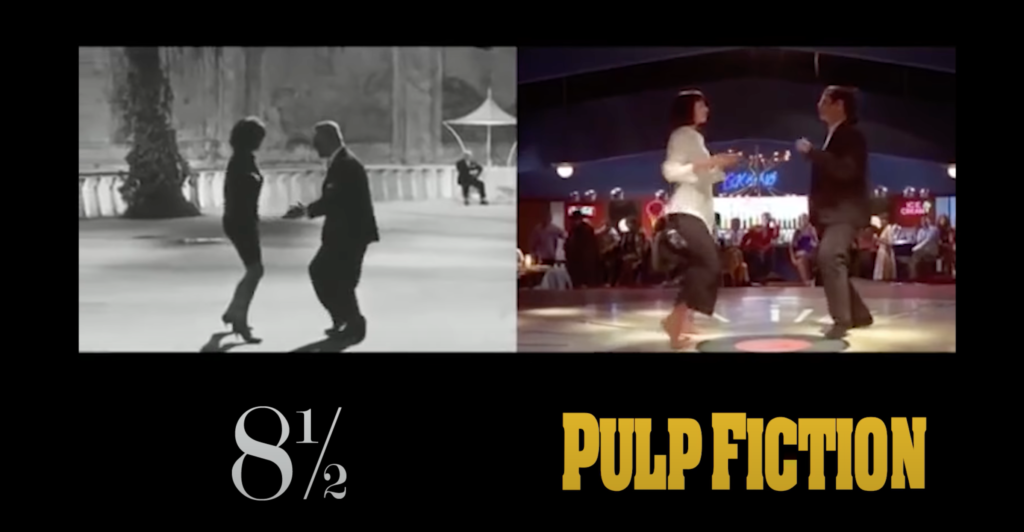
Quadeca, in this case, took a concept that he thought was interesting and stemmed an entirely new narrative off of the story. The fact that an artist can be inspired by a storyworld, create in a completely different form of art and extract it and put it into their own does well to exploit the clarity with which these worlds are created. David Lowery of A24, created an entire storyworld based on the abnormal and unknown in our lives, then someone so meticulously understood the place it was set so they could do it themselves. Both of these stories deal with death and the afterlife, even if they have different points to be made at the end.
They also are driven by loneliness, something overlooked in the analyses I have read on both stories. The most subtle, but moving force in these stories is loneliness, in my opinion. Quadeca commits suicide due to the loneliness of his previous breakup and life in the public eye, then exists in sadness due to the loneliness he finds in the afterlife, “Try to call, but the dog runs away from me now,” as he says in Picking Up Hands (see featured image of dog barking at him). Loneliness then rises so heavily that he successful kills his family just so that he will not be lonely. At the time, it is said he does it out of anger, but to me it seems more like he wanted to be with his family and to eliminate his pervasive loneliness. A Ghost Story is so horrible because of the intimacy of the grief you witness, but the plane the ghost exist in is horrible because of the fact he is there by himself. He exists in what could be best described as a purgatory causing this underlying anxiety from the sympathy you feel for someone living by themselves forever. His wife too, as I just mentioned, experiences the grief of losing her new husband suddenly and we live through the loneliness and sadness with her.
Dying is something ubiquitously feared, these two artists make everyone confront death with the worst outcome possible. In what feels to me like exposure therapy, through song and the exploitation of cinemagraphic features like the lengths of shots, the color, lack of sound and the intimacy of the movie you live with the main characters in the beyond. No part of Ben Lasky’s album sounds like it is part of this world, all of it feels like a creepy attic or a different realm. No part of A Ghost Story feels like the real world, and when you listen or watch these works of art you live in the story world with the ghost. Nothing to say or do, just stand and watch what is happening to you.
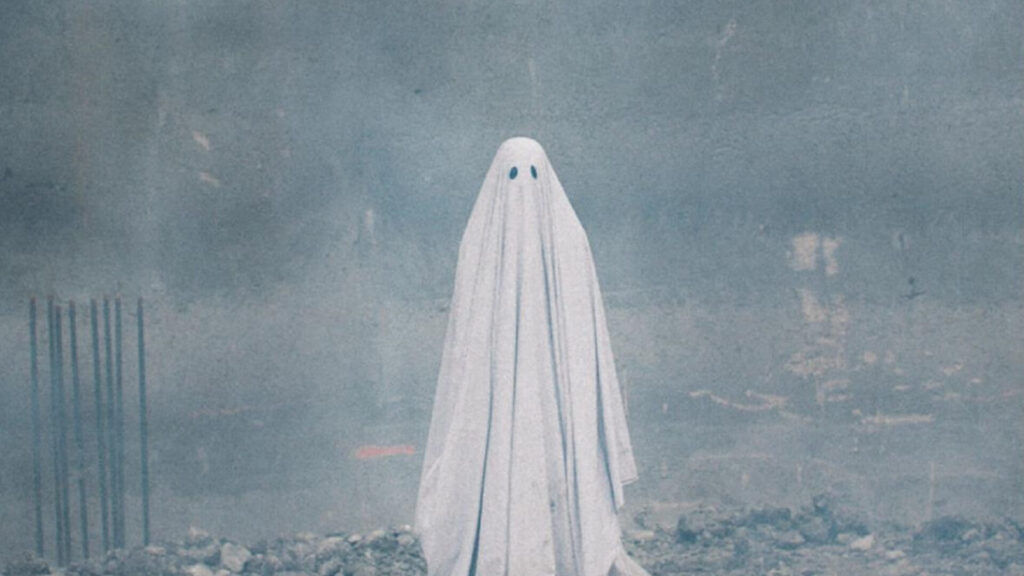
Citations
Brody, Richard. “The Wildly Original Hauntings of ‘A Ghost Story.’” The New Yorker, The New Yorker, 11 July 2017, www.newyorker.com/culture/richard-brody/the-wildly-original-hauntings-of-a-ghost-story.
Gomez, Jade. “How Quadeca Turned Himself into a Ghost.” PAPER Magazine, PAPER Magazine, 4 Jan. 2023, www.papermag.com/quadeca#rebelltitem9.
Hinchliffe, Alexander. “Quadeca Tells a Modern Ghost Story.” The Stuyvesant Spectator, stuyspec.com/article/quadeca-tells-a-modern-ghost-story. Accessed 21 Feb. 2024.
The AtZ Show. (2018, March 14). Logic & Tarantino | The Art of “Stealing” [Video]. YouTube. https://www.youtube.com/watch?v=hNrkyrghMQ0
Featured Image: Still from I Didn’t Mean to Haunt You Full Album Movie on Youtube by Quadeca – https://www.youtube.com/watch?v=5tbOspjJ5f0&t=602s
